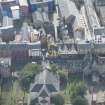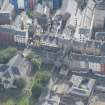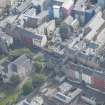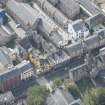Pricing Change
New pricing for orders of material from this site will come into place shortly. Charges for supply of digital images, digitisation on demand, prints and licensing will be altered.
Upcoming Maintenance
Please be advised that this website will undergo scheduled maintenance on the following dates:
Thursday, 9 January: 11:00 AM - 3:00 PM
Thursday, 23 January: 11:00 AM - 3:00 PM
Thursday, 30 January: 11:00 AM - 3:00 PM
During these times, some functionality such as image purchasing may be temporarily unavailable. We apologise for any inconvenience this may cause.
Edinburgh, 167 - 169 Canongate
Public House (19th Century), Tenement (17th Century)
Site Name Edinburgh, 167 - 169 Canongate
Classification Public House (19th Century), Tenement (17th Century)
Canmore ID 52357
Site Number NT27SE 329
NGR NT 26403 73788
Datum OSGB36 - NGR
Permalink http://canmore.org.uk/site/52357
- Council Edinburgh, City Of
- Parish Edinburgh (Edinburgh, City Of)
- Former Region Lothian
- Former District City Of Edinburgh
- Former County Midlothian
NT27SE 329 26400 73795
A rubble-built tenement of three storeys and an attic, built pre-1647. Restored. Ground floor public house.
RCAHMS 1951.
Publication Account (1951)
106. 167-169 Canongate.
The rubble-built tenement of three storeys and an attic that abuts on the W. side of the Tolbooth has an interesting front, of 17th-century date, which seems to be recognisable in Gordon's sketch of 1647. On plan the building is L-shaped, the main block running E. and W., and the wing, which contains the newel stair, encroaching upon the pavement at the W. end. The two lower floors have been altered and provided with a modern wooden shop-front. The floor above has two windows, probably original, with rounded arrises, as well as a third and smaller window which seems to have been struck out at a later time. The attic floor is lit by two dormers with triangular pediments, the apex finials taking the shapes respectively of a crescent and a thistle. From the beginning each floor has been a separate flat. The main block is divided longitudinally by a stone partition, and today the inner division is subdivided into two rooms. Apart from a plain 17th century fireplace on the top floor, the interior is quite commonplace.
RCAHMS 1951




















